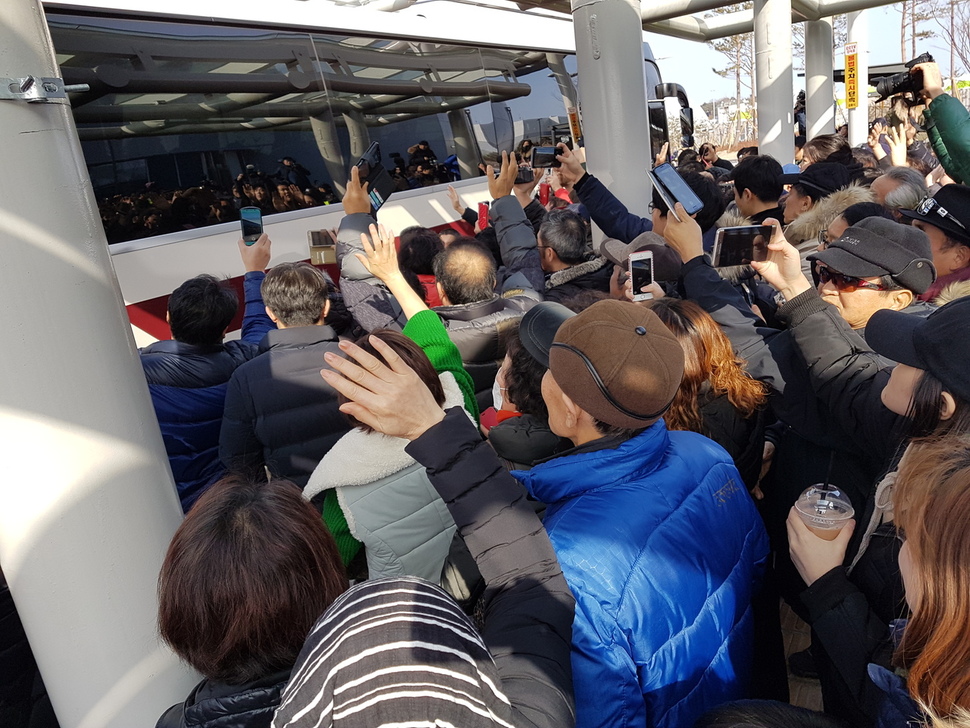 |
|
Buses carrying the North Korean advance inspection team, including Samjiyon performance group director Hyon Song-wol, cross the Unification Bridge into South Korea at Paju, Gyeonggi Province on Jan. 21. (by Kim Seong-gwang, staff photographer)
|
President Moon likely failed to predict the controversy that would erupt when he first proposed the idea
The fielding of a unified Korean women’s hockey team at the Pyeongchang Winter Olympics has been a matter of no small controversy. Amid an intense outpouring of opinion on social media and online, a Blue House “citizens’ petition” posted on Jan. 12 had more than 46,000 signatories as of the afternoon of Jan. 21. Their rationale for opposing the team can be boiled down to a belief that it is unfair for athletes who worked to participate in the Olympics to be sacrificed on behalf of North Korean athletes who were not originally eligible. Some have also voiced concerns about the team’s reduced cohesion. The administration has expressed consternation over the complaints and appealed for understanding within the broader framework of the “Peace Olympics.” As the furor grew, a senior Blue House official explained to reporters on Jan. 18 that the Korean Peninsula “is experiencing some a very happy situation and atmosphere now compared to when there was the threat of war.” “I would like it if people looked at the larger ‘forest’ here, which is that we’re heading toward the ‘Peace Olympics’ we were hoping for and discussing participation by North Korea, which seemed unthinkable in the past,” the official said. Surveys by different polling outlets show large differences in views on the unified team. On Jan. 11, SBS reported an overwhelming majority of South Korean saying a unified team should be “fielded if possible,” citing survey findings showing 72.2% of respondents arguing that there was “no need to go overboard” on the issue. But a Jan. 17 online survey by Dailian showed relatively even levels of 44.1% support for the unified team and 42.5% opposition to it. With such a large discrepancy, the findings alone provide a poor predictor of future opinion trends – but they do provide a clear indication that the situation is vastly different from the hopes and encouragement that met the unified teams fielded in 1991 at the World Table Tennis Championships and FIFA World Youth Championship. It’s also a situation President Moon Jae-in very likely failed to predict when he first proposed North Korea’s participation in the Olympics and the fielding of a unified team at an opening ceremony for the World Taekwondo Championships in Muju last June.
 |
|
Citizens wave to a bus carrying members of the North Korean advance team at Gangneung Station on Jan. 21. (by Park Soo-hyuk, Gangwon correspondent)
|







